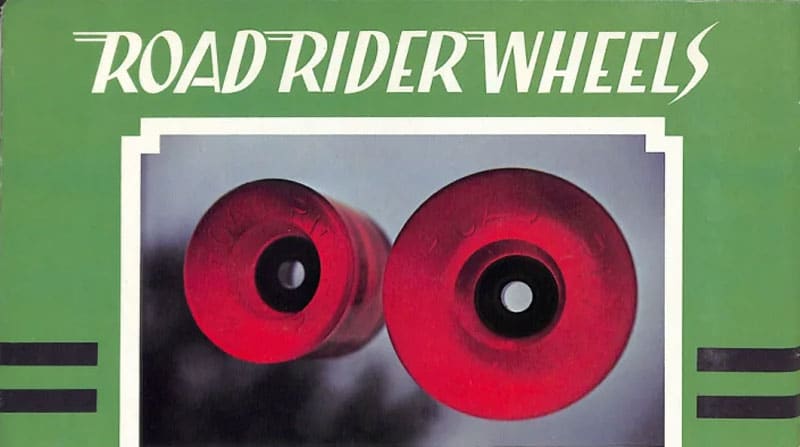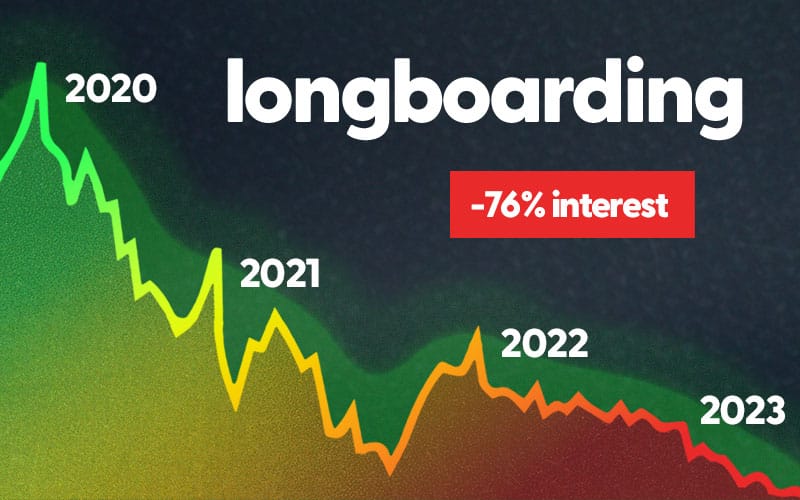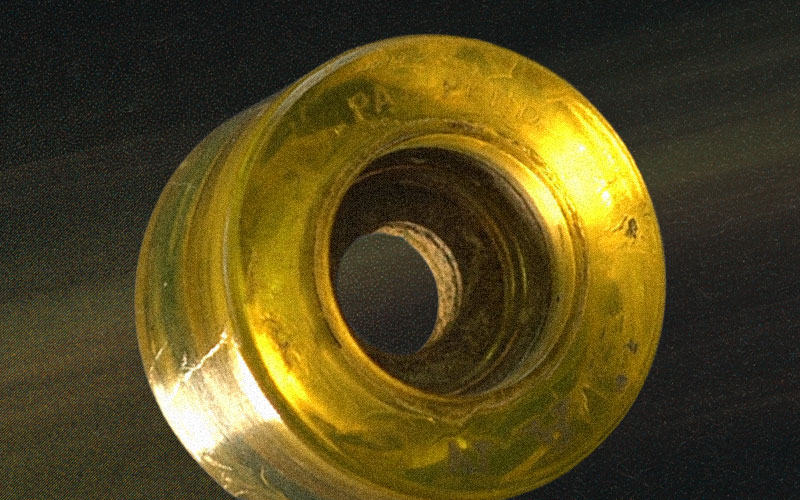Santa Cruz Skateboards (aka N.H.S.) started in 1973 with three people:
- Richard Novak
- Doug Haut
- Jay Shuirman
NHS was one of the most innovative and dynamic skateboard companies to emerge in the 1970s. They were at the forefront of skateboard making, from boards to wheels to trucks.
Although not quite approaching the same level of a breakthrough as urethane, when wheels went from 64 loose ball bearings to precision bearings, there was an immediate impact on skateboarding.
The Early Days
The story of how wheels moved from loose ball bearings to precision begins with a surfboard company. In the early 1970s, three surfing buddies, Richard Novak, Doug Haut, and Jay Shuirman got together to make surfboards. The trio worked out of the back of the Santa Cruz Surf Shop and eventually took the name NHS (from their initials).
In 1973, NHS found themselves with a surplus of fiberglass and no customers, so they started to think about other applications. They came up with the idea of making skateboards.
Thus, Santa Cruz Skateboards was born.

Precision Ball Bearings
One day, while Richard and Jay were assembling loose ball-bearing wheels onto trucks, something happened that changed the entire skateboard industry. Jay accidentally spilled a wooden cask of nearly 100,000 individual loose ball bearings!
After this incident, a man named Tony Roderick walked into the shop. Tony was from a Rhode Island company called Quality Products. Holding a sealed precision bearing in his hand, Tony wondered if there was an application for skateboard wheels.

Precision Skateboard Wheels
With Quality Products heading up production and NHS handling marketing and sales, the Road Rider precision skateboard wheels were born in 1975.
Road Riders started out with their #2 model and progressed to sizes #4, #6, and the Henry Hester model for slalom. Eventually, they made harder pink-colored wheels for park riding. Without question, red Road Rider wheels were attached to many trucks during the 1970s.

Volume 2 Issue 3
Hundreds of thousands of OJ’s, Speed Wheels, and Bullets have also been purchased by skaters. All of them come from NHS.
But Santa Cruz’s innovations didn’t stop with wheels.
They created graphite-loaded slalom boards, were one of the first manufacturers out with five-ply boards, and Jay Shuirman was instrumental in developing Independent Trucks.
Tragically, Jay died in 1979 of leukemia.
Research & Development
The new person to head up Research and Development at NHS was former skateboard test pilot and freestyler Tim Puimarta.
From the start, Tim worked on a number of important projects, including the addition of an extra two plys of wood to the five-ply boards and working with silk screen technologies to achieve full images on boards (i.e., the Olson checkerboard design).
In the early 1980s, Tim started working on a variety of board designs. He worked on concave shapes and developed the first upturned nose.
“The one thing I never did was copy anyone. There was just something in my nature that said I don’t want to ever copy anyone.”
Riser Pads & Fiberglass Decks
Many skaters active in the 1980s remember Cell Blocks — the first stackable, colored riser pads. Black Top skateboards were another of Tim’s innovations: “They had black fiberglass on top of laminated wood. Literally, out of the tens of thousands Black Top skateboards we ever made, only one came back broke.”
Everslick
In 1989, Tim took skateboarding to the next level and came up with Everslick, a type of thermoplastic covering the bottom of the board. Tim remembers a pro skater exclaiming, “Oh my God! You can slide over anything!” Santa Cruz Skateboards was fast out of the gate with Everslick.
“We got to market fast it took two weeks from conception to production.” At first many people thought the idea was crazy, but as Tim recalls “within six months everyone had copied it.”
Recyclable Skateboards
In 1994, an industrial product designer came to Santa Cruz with an idea for making plastic, injection-molded snowboards.
“He had this stuff he’d lifted from Lockheed — definitely Stealth Bomber stuff,” recalls Tim.
Both Richard Novak and Tim immediately thought, “skateboard.”
From this concept came “NuWood,” a board you can drive a car over or leave out in the rain for a thousand years without damage. The interesting thing about NuWood is that it is the world’s first truly recyclable skateboard. When a rider was finished with it, they could send it back, and they would grind it up to make a new one.
Printable Grip Tape
Another innovation from NHS was grip tape featuring full-color graphics.
“Our president, Bob Denike, wanted some sort of innovation to grip tape. We code-named it wacky tape. I found a way to put photos into grip tape.”
Tim took about eight months to develop this new tape.
Tim Puimarta is humble about the skateboard research and development that he has done for the past two decades. While some of his ideas have failed to take off, most have been incredibly successful.
“If I have one strength, it is that I can take our team riders’ language, emotion, and feedback and translate it into a three-dimensional object that can be mass-produced. If there’s a theme to what I’ve done, it is building value into what a skater buys.”
This originally appeared in my book, The Concrete Wave: The History of Skateboarding.



